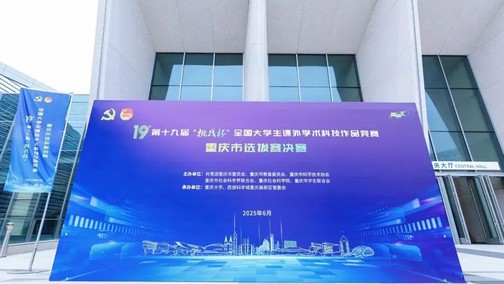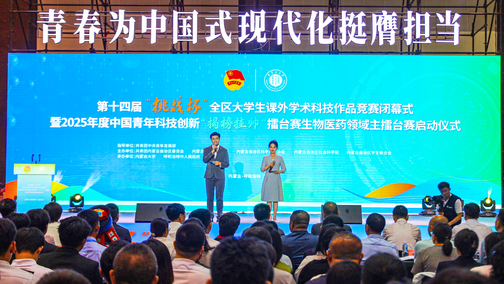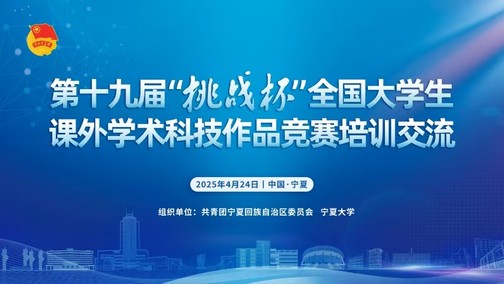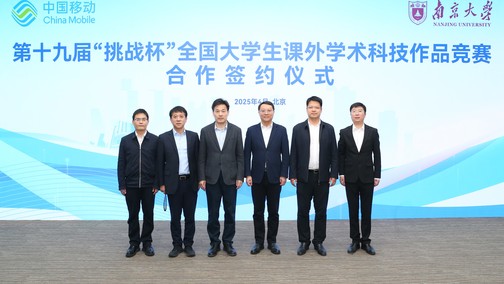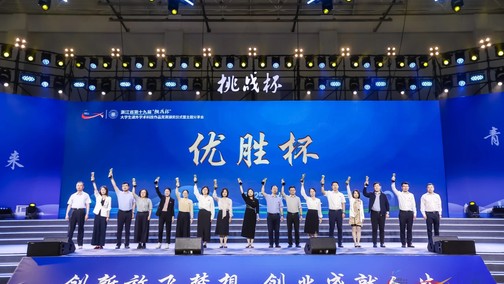中国日报网(China Daily)丨Eureka moments at the Challenge Cup(“挑战杯”中的顿悟时刻)
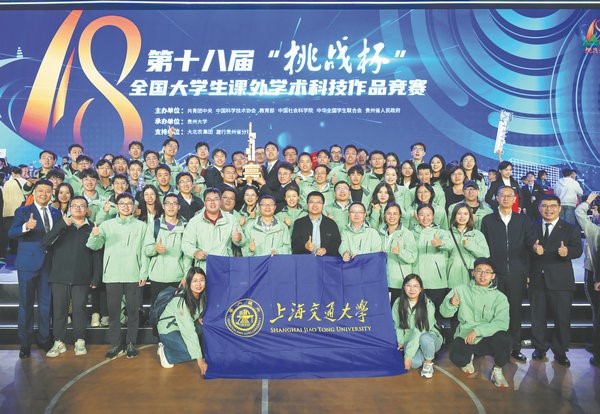
Shanghai Jiao Tong University achieved the highest honor at the 18th "Challenge Cup" National College Student Extracurricular Academic and Technological Works Competition, held in Guiyang, Guizhou province, from Oct 27 to Oct 31. [Photo provided to China Daily]
It is said that over 2,000 years ago, a king in ancient Greece was suspicious about the purity of his gold crown. In order to learn the truth, he entrusted the crown to Archimedes, the renowned mathematician and inventor who lived between 287 and 212 BC. For a while, Archimedes was baffled by the puzzle. One day, while bathing, Archimedes was inspired by the water's overflow. He rushed out of the bath in excitement, shouting, "Eureka (I found it)! Eureka!"
This marked a historic moment in the birth of the law of buoyancy, and the term "eureka moment" has come to refer to a significant discovery made in a flash of insight.
Fast forward to last month's 18th "Challenge Cup" National College Student Extracurricular Academic and Technological Works Competition. Xie Haoqiang, a 22-year-old student from the School of Biomedical Engineering at Shanghai Jiao Tong University, experienced his own "eureka moment".
When Xie was tasked with algorithm development in a cutting-edge science project centered on noninvasive localization using surface-enhanced transmission Raman spectroscopy (SETRS), he encountered a bottleneck. After prolonged contemplation, a sudden realization dawned upon him, akin to Archimedes' moment of revelation.
"A solution suddenly occurred to me at that very time. I turned on the computer right away, and while I typed the code, my hands shook. At last, it demonstrated success!" Recalling that critical moment, Xie's excitement is palpable. "It was at that time that I thought of the tale of Archimedes discovering the law of buoyancy, and I believe this was my eureka moment."
The 18th "Challenge Cup" took place at Guizhou University in Guiyang, Southwest China's Guizhou province, from Oct 27 to Oct 31. Ultimately, Shanghai Jiao Tong University secured the competition's highest honor, the coveted "Challenge Cup".

Wu Zongyu, 21, a student at Shanghai Jiao Tong University. [Photo provided to China Daily]
Wu Zongyu, 21, is the team leader of the SETRS system project, which won the grand prize in this year's competition. He fully recognized the critical importance of noninvasive detection and precise localization of deep lesions in clinical diagnosis and treatment. However, existing methods encounter limitations in accurately identifying lesions in deep tissues.
"Our SETRS system proposes a new strategy for accurate lesion localization and dramatically increases the depth of detection," Wu said.
This groundbreaking project, from the initial idea to the current achievements, required two and a half years of relentless learning and experimentation. "The process of experiments involved some deviations. Even a small alteration could have led to entirely different outcomes," Wu said.
He also acknowledged that it was a collaborative effort. "We have an amazing team where everyone contributes their talents. This achievement isn't something I can accomplish on my own."
This theme of teamwork emerged as a recurring aspect among many competitors. Fang Zeng, a 24-year-old master's student at Shanghai Jiao Tong University's School of Mechanical Engineering, is the head of a project named "high-frequency micro-forging anti-fatigue manufacturing technology on the surface of aero-engine blades", which secured victory in the special "Leaderboard Challenge" competition.
Reflecting on their success, Fang pointed out: "Besides the six members in our team, many of our senior schoolmates in the laboratory also provided significant assistance for this project. This honor is not just for the six of us but for everyone who has supported us."
Fang's team elevated the enhancement process for aero-engine blades, resulting in a remarkable "increase by more than 10 times" in the fatigue life of the blades.
"We are now in the process of applying for two national invention patents and have collaborated with an aero-engine corporation to facilitate the implementation and production of this technology," Fang said.

Li Qing'ang, 22, a student at Tsinghua University. [Photo provided to China Daily]
Meanwhile, Li Qing'ang, 22, an undergraduate student in the Department of Mechanical Engineering at Tsinghua University, embarked on a solo research journey. He engineered a wireless passive sensor for orthopedic implants to track the process of post-surgical fracture healing and bone rehabilitation. So far, this invention has been granted three patents.
"Traditional metal implant materials faced challenges such as electrochemical corrosion and mechanical incompatibility," Li said. "However, this novel passive sensor, wirelessly supported by advanced materials and technology, can maintain the mechanical uniformity of the implants and prevent corrosion. This advancement will enhance the operational capabilities and prolong the life span of orthopedic implants."
Li also admitted that the sensor-receiving apparatus he currently uses is still a large, expensive laboratory device. He hopes to create a tiny device in the future that can either receive signals or be transformed into a phone application.
"This will allow patients and doctors to monitor the healing status of the bone in real time on their phones," Li said in excitement as he outlines this aspiration. "I truly enjoyed the process of turning my ideas into tangible, functional products, which is why I chose to study mechanical engineering. I find it fascinating."
The 18th "Challenge Cup" competition showcased the inventiveness of today's youth and attracted more than 2.5 million students from diverse disciplines from over 2,000 colleges nationwide.

Gao Ruifang, 21, a student at Guizhou University. [Photo provided to China Daily]
Gao Ruifang, a 21-year-old student from the College of Literature at Guizhou University, explored the burgeoning phenomenon of "Cun BA" in her award-winning study.
Originating in Taipan village in Guizhou province, Cun BA has recently gained popularity on the internet. As a college student studying in Guizhou, Gao attended several live competitions. "While I was watching, I wondered what factors had contributed to its success, given the abundance of basketball games across the country."
Gao's curiosity sparked the initial idea for her research. She led an investigatory team with eight members. "To bring different perspectives to the research, we involved team members with diverse academic backgrounds," she said.
Delving into the heart of Taipan village and 61 surrounding villages, they collected 2,350 valid questionnaires, conducted 316 in-depth interviews, and visited 19 local institutions. "To enhance the research data, we tailored the questions in the questionnaires according to the diverse populations surveyed," Gao said.

